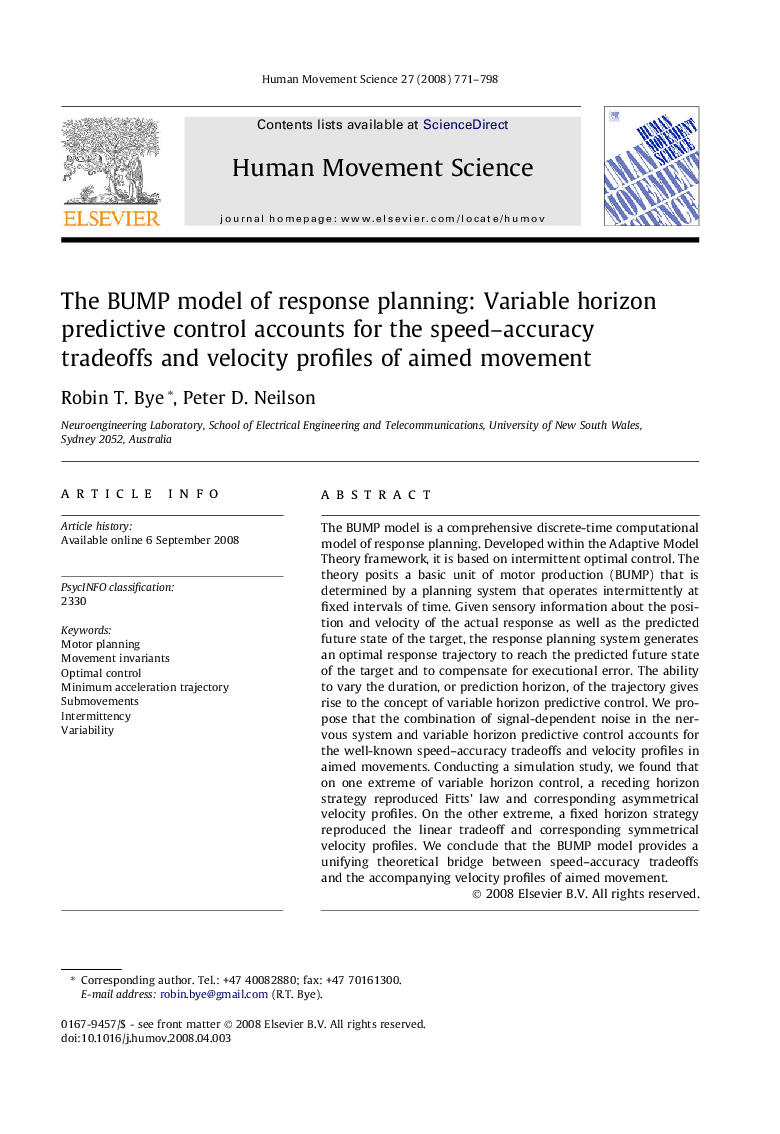| کد مقاله | کد نشریه | سال انتشار | مقاله انگلیسی | نسخه تمام متن |
|---|---|---|---|---|
| 928891 | 922403 | 2008 | 28 صفحه PDF | دانلود رایگان |

The BUMP model is a comprehensive discrete-time computational model of response planning. Developed within the Adaptive Model Theory framework, it is based on intermittent optimal control. The theory posits a basic unit of motor production (BUMP) that is determined by a planning system that operates intermittently at fixed intervals of time. Given sensory information about the position and velocity of the actual response as well as the predicted future state of the target, the response planning system generates an optimal response trajectory to reach the predicted future state of the target and to compensate for executional error. The ability to vary the duration, or prediction horizon, of the trajectory gives rise to the concept of variable horizon predictive control. We propose that the combination of signal-dependent noise in the nervous system and variable horizon predictive control accounts for the well-known speed–accuracy tradeoffs and velocity profiles in aimed movements. Conducting a simulation study, we found that on one extreme of variable horizon control, a receding horizon strategy reproduced Fitts’ law and corresponding asymmetrical velocity profiles. On the other extreme, a fixed horizon strategy reproduced the linear tradeoff and corresponding symmetrical velocity profiles. We conclude that the BUMP model provides a unifying theoretical bridge between speed–accuracy tradeoffs and the accompanying velocity profiles of aimed movement.
Journal: Human Movement Science - Volume 27, Issue 5, October 2008, Pages 771–798